IDP Collections in Germany
This summary of the history and make-up of the collections held in German institutions was produced by the IDP team, led by Susan Whitfield, in December 2005. The information was last updated in November 2010. While we are keeping this text up as a background resource, please be aware that new information may have come to light since its initial writing.
The German Turfan expeditions
At the end of the nineteenth century, reports by European travellers and scholars about discoveries and finds along the Silk Roads aroused the interest of the Germans for the study of the hitherto unknown cultures. A decision to conduct their own expeditions to East Turkestan was taken immediately after the presentation of sensational text finds from the area at the twelfth international Congress of Orientalists in Rome in the year 1899.
However, the expedition planned by Albert Grünwedel, director of the Indian Department of the Museum für Völkerkunde, was delayed until September 1902 because it proved difficult to find the necessary financial support. Finally, on the 11th August 1902 the expedition started with a fund of 40,000 marks that was composed of public funds of the museum for a quarter of the sum, donations by the industrialist Krupp and the sponsor James Simon, and a contribution by the ‘Ethnological Aid Committee Berlin’; (Ethnologisches Hilfskommitee Berlin). The expedition team consisted of Albert Grünwedel as director, the Orientalist Georg Huth and a museum technician, Theodor Bartus, a former sailor. The expedition reached its chosen destination, the oasis of Turfan, at the beginning of December 1902. Turfan was to lend its name to all four German expeditions and to the collections comprising their discoveries, even though investigations and excavations were also carried out in neighbouring areas. Grünwedel regarded it as his primary task to document the ruined sites discovered by them with accurate plans and to indicate the art-objects on these. The work and results of the first expedition, which had the permission of the Chinese authorities and the support of the local Uighur rulers, are described in his Bericht über archäologische Arbeiten in Idikutschari und Umgebung im Winter 1902–1903 [Report on archaeological work in Idikutshari and surrounds in the winter 1902–1093], that appeared in 1905.
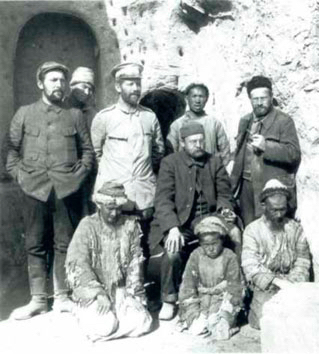
The amazing results and discoveries of this first expedition led to approval for a continuation of the work by the newly-founded German section for the study of Central Asia, guided by H. Pischel and H. Lüders. Because the next three expeditions were funded by the state, the second expedition is also termed the ‘First Royal Prussian Turfan expedition’. Albert von Le Coq, scientific collaborator at the museum, was given charge of it and together with Bartus he worked in oasis of Turfan from November 1904 until December 1905.
The third expedition, again under the leadership of Grünwedel, began with his arrival in Kashgar in December 1905. The two expeditions joined and the third expedition lasted until June 1907. In the middle of 1906 Le Coq, beset by illness, set out on the journey homeward. Grünwedel and Bartus continued work, which now for the first time extended to the oases to the west of Turfan, including Kïzïl with its extensive complexes of Buddhist caves. Reports on the second and third expeditions are Gründwedel’s Altbuddhistische Kultstätten in Chinesisch-Turkistan (1912) and Le Coq’s popular book Auf Hellas Spuren in Ostturkistan (1926).
The final and fourth expedition began in June 1913 and was completed in February 1914 shortly before the outbreak of the First World War. It was under the leadership of Le Coq and primarily continued the work in the area of Kucha begun during the third expedition. Le Coq published a report on this journey in Von Land und Leuten in Ostturkistan in 1928.
In the following books Le Coq presented his scientific evaluation of the discoveries:
- Chotscho (1913)
- Bilderatlas zur Kunst und Kulturgeschichte Mittelasiens (1925)
- Die Buddhistische Spätantike in Mittelasien Vols 1–5; vols 6–7 in cooperation with Ernst Waldschmidt (1922–1933)
The German Turfan Expeditions
1st Expedition (Dec. 1902-April 1903).
- Leader: Prof. A. Grünwedel; Participants: Dr. G. Huth, Th. Bartus.
- Route: Yining—Urumqi—Turfan Oasis (Karakhoja, Bezeklik, Sengim, Toyuk (Nov. 1902-March 1903) [paintings, statues, Mir./Uig./Np. manuscripts of the Manichaeans in Man./Uig./Runes, Ind./Chin./Tang. texts]) — northern Silk Road (Toksun—Kharashahr—Kucha—ruins near Kumtura [paintings] — Kizil—Aqsu—Tumshuk—Maralbashi—Kashgar).
- Finds: 46 crates.
2nd Expedition (Nov. 1904-Dec. 1905).
- Leader: Dr. A. v. Le Coq; Participants: Th. Bartus.
- Route: Urumqi —Turfan Oasis (Karakhoja and surrounding areas, Yarkhoto (Nov.1904-Aug.1905); Hami (Aug. 1905); Turfan) — northern Silk Road —Kashgar (Oct. 1905; there united in Dec. with the 3rd expedition).
- Finds: 103 crates, mainly paintings (Bezeklik), not so many texts (Christ. texts in Syr., Sogd., Mp., Uig.; Buddh. texts).
3rd Expedition (Dec. 1905-April 1907 – until June 1906 united with 2nd expedition).
- Leader: Prof. A. Grünwedel; Participants: A. v. Le Coq, H. Pohrt, Th. Bartus.
- Route: Kashgar—Tumshuk (Jan. 1906)—Kizil—Kucha—Kumtura (Febr. 1906, temples of grottoes [paintings])—temples of grottoes in Kizil, Kirish (Feb.-May 1906) [paintings]), — Korla/temple complex and caves of Shorchuk [paintings, Buddh. texts] —Turfan Oasis (July 1906)—Urumqi—Hami—Toyuk (Jan. 1907)—Shorchuk (Feb./March 1907)—Turfan, return journey via Urumqi (April 1907).
- Finds: 118 crates.
4th Expedition (June 1913-Feb. 1914).
- Leader: Dr. A. v. Le Coq; Participants: Th. Bartus.
- Route: Kashgar—Kucha, Kizil (June-Sept. 1913)—Kirish, Simsim—Kumtura (Nov. 1913)—Tumshuk (Dec. 1913-Jan. 1914)— Kashgar.
- Finds: 156 crates each with about 75— 80 kilos (in particular texts in Sakan and Sanskrit from Tumshuk).
The objects of the four German Turfan Expeditions were first stored in the Indian Department of the Ethnological Museum but, after the founding of the Museum of Indian Art (Museum für Indische Kunst) in the year 1963 they were transferred to its collections where they now remain (in Berlin-Dahlem).
In 1914 (at the behest of the responsible Ministry for Education) the extensive texts were (with the exception of a small group of selected, mostly illuminated fragments, which were separated for exhibition in the museum) handed over to the Königlich-Preußische Akademie der Wissenschaften [Royal Prussian Academy of Sciences] to be researched. The responsibility had been transferred two years previously on the 5th of May 1912 to the newly formed ‘Orientalische Kommission’ [Oriental Commission] which was to coordinate and support the scientific study of the results of German excavations in the East.
The ‘Orientalische Kommission’, which was active until the Second World War, entrusted the edition of the numerous texts to renowned scholars of the various oriental disciplines. The texts had arrived in Berlin in packets. These were unpacked, the texts placed between glass plates and sealed at the edges with black tape. This method of conservation is still being used today, with some improvements. During the Second World War the Turfan fragments were placed in storage. They were, for example, placed in former salt mines in Wintershall, Solvayhall and Schönbeck/Elbe. The precise figures for losses of texts during the war cannot be determined because of an almost complete lack of pre-war inventory lists and catalogues.
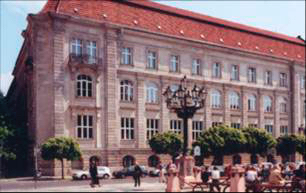
BBAW © Berlin-Brandenburgische Akademie der Wissenschaften
After the war the major part of the collection was given in 1946 to the newly-founded Deutsche Akademie der Wissenschaften [German Academy of Sciences]. A smaller portion found its way to the Mainzer Akademie der Wissenschaften und Literatur [Mainz Academy of Sciences and Literature]. Selected Iranian fragments were given to the Orientalische Seminar at the University of Hamburg to be researched and Sanskrit fragments were edited in Göttingen. In 1956 the Iranian fragments in Hamburg were transferred to Mainz. After the Staatsbibliothek Preußischer Kulturbesitz [State Library Prussian Cultural Heritage] in Marburg was founded the so-called Mainz subdivision of the collection found its way to Marburg. From there it came, together with the other holdings of the State Library to the new building in the Potsdamer Platz in Berlin. Since 1992 the whole collection has been reunited in the possession of the Berlin-Brandenburgische Akademie der Wissenschaften (BBAW) [Berlin Brandenburg Academy of Sciences and Humanities], the successor of the Prussian Academy of Sciences.
The division of the collection after the Second World War made access to and work on the texts difficult. The Berlin Turfan Collection was transferred to the responsibility of the Institut für Orientforschung [Institute for the Study of the Orient] founded at the German Academy of Sciences in 1947, where, in 1965, Wolfgang Steinitz and Georg Hazai set up the Turfanforschungsgruppe [Turfan Research Team]. From 1969 to 1991 work on the Berlin Turfan texts was carried out within the framework of the area ‘Ancient Orient’ of the Central Institute for Ancient History and Archaeology of the Academy of Sciences of the GDR.
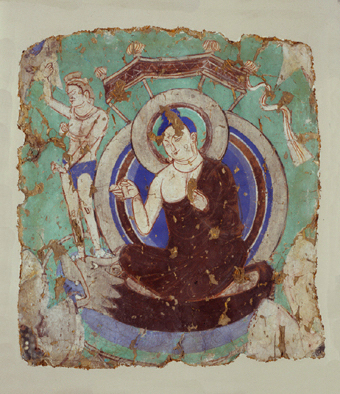
Besides some original texts, in the period from 1948 to 1961 photographs of most of the Berlin Sanskrit fragments were sent to Göttingen, which made possible the edition and subsequently the cataloguing of the major part of the Berlin materials. The registration and description of the ‘Sanskrit-Handschriften aus den Turfan-Funden’ [The Sanskrit manuscripts amongst the Turfan finds] was from the very beginning a part of the project, begun in 1957 by the Deutsche Morgenländische Gesellschaft and initially financed by the Deutsche Forschungsgemeinschaft, ‘Katalogisierung der Orientalischen Handschriften in Deutschland’ [Union Catalogue of the Oriental manuscripts in Germany] (KOHD). Since 1990 KOHD is a long-term project of the Academy Programme at the Academy of Sciences in Göttingen. A further long-term project of the Göttingen Academy is devoted to Central Asian Buddhist literature, the ‘Sanskrit-Wörterbuch der buddhistischen Texte aus den Turfan-Funden und der kanonischen Literatur der Sarvastivada-Schule’ [Sanskrit dictionary of the Buddhist texts amongst the Turfan finds and of the canonical literature of the Sarvastivada school].
The work of the Academy project ‘Turfanforschung’ of the Berlin Brandenburg Academy of Sciences and Humanities (BBAW) had been concentrated since 1992 on the edition of the Iranian and Old Turkish fragments.
The catalogues for these groups of texts are being prepared by the collaborators of the Arbeitsstelle Berlin 2: Turfanforschung of the Academy project KOHD working in Berlin in the BBAW.
In September 2002 an international conference took place in Berlin on the occasion of the centenary of the start of the German Turfan expeditions under the title ‘Turfan Revisited. The First Century of Research into the Arts and Cultures of the Silk Road’. It was hosted by the Berlin Brandenburg Academy of Sciences and Humanities together with the Museum of Indian Art and the Berlin State Library and was accompanied by a documentary exhibition in the Museum of Indian Art. The papers of the conference appeared in 2004 as Volume 17 of the series Monographien zur indischen Archäologie, Kunstgeschichte und Philologie of the Ernst Waldschmidt Foundation.
Collections: Content and Access
The results of the four German Turfan expeditions were immense. They brought thousands of items, murals and other artefacts as well as ca. 40,000 fragments of texts to Berlin.
1. The Turfan Collection of the Berlin Brandenburg Academy of Sciences and Humanities
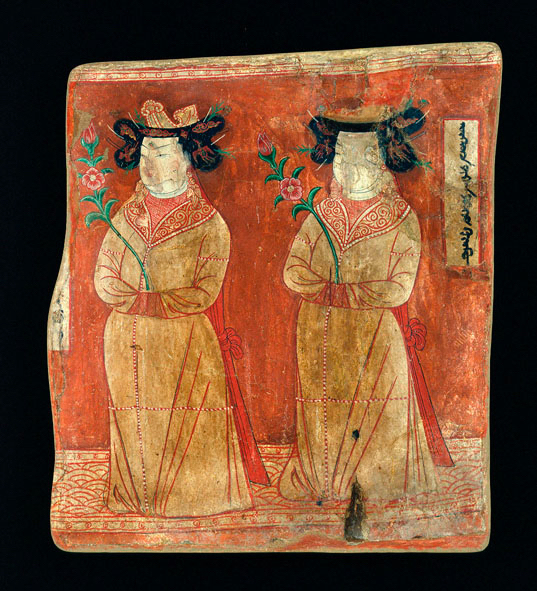
As regards textual materials from the oases on the northern Silk Road, the Berlin Collection, with its ca. 40,000 fragments, is the richest and most significant in the world. The varieties of scripts and languages in which the texts were composed (more than twenty different scripts and languages) make the collection very precious. Unique treasures include the Manichaean original texts from Central Asia, Christian texts in Sogdian, fragments in Bactrian and the ‘Hephthalite’ script, fragments of a psalter in Middle Persian and a variant of the Pahlavi script and fragments in Old Turkish Runes.
The custody and conservation of the manuscripts and block-prints of the Berlin Turfan Collection was entrusted by a contract for a depositum in 1992 to the Oriental Department of the Berlin State Library — Prussian Cultural Heritage. The texts of the Berlin Turfan Collection are kept in two places in Berlin. The middle Iranian and Old Turkish Turfan texts are in the Turfan archive of the Berlin Brandenburg Academy of Sciences and Humanities where they are being worked on and catalogued. The fragments in the other languages are kept in the Oriental Department of the Berlin State Library — Prussian Cultural Heritage.
1.1 The Turfan fragments in the Turfan archive of the BBAW
The Turfan archive of the BBAW contains on the whole about 12,000 middle Iranian and Old Turkish Turfan fragments. Of these about 6000 are Uighur fragments (with the signature ‘U’); 1600 Chinese/Uighur fragments (signature ‘Ch/U’); 800 middle Iranian and Old Turkish fragments formerly of the Mainz subdivision of the collection (signature ‘Mainz’); 3500 Manichaean fragments in various languages, in particular Middle Persian and Parthian, as well as Old Turkish and Sogdian (signature ‘M’); ca. 1000 Sogdian and Chinese/Sogdian fragments (‘So’ and ‘Ch/So’); 300 Sogdian fragments in Nestorian script (signature ‘n’); and smaller groups of Tumšuqsakan (‘TS’), Khotansakan (‘KS’) and Bactrian (‘h’) fragments.
To protect the originals and to facilitate access to the scientifically extraordinarily important source material the Old Turkish, Iranian and Mongolian parts of the collection were digitized and archived in a three-staged project funded by the Deutsche Forschungsgemeinschaft (DFG) between October 1997 and June 2005 under the aegis of the Academy project Turfanforschung (BBAW) and the Union Catalogue of Oriental manuscripts in German (Academy Göttingen). The necessary photographic and restoration work was carried out by the Berlin State Library — Prussian Cultural Heritage. The fragments are now freely available on the website of the Academy project Turfanforschung.
Registration in order to use the fragments in the Turfan archive of the BBAW and for ordering digital images is conducted through the Oriental Department (‘Orientabteilung’) of the Berlin State Library (‘Staatsbibliothek zu Berlin’).
Rules for the use of the manuscripts in the Berlin Turfan Collection.
Contact:Berlin-Brandenburgische
Akademie der Wissenschaften
Akademienvorhaben Turfanforschung
Jägerstraße 22–23
D — 10117 Berlin
email: [email protected]
website: Akademienvorhaben TurfanforschungAkademie der Wissenschaften zu Göttingen
Katalogisierung der Orientalischen Handschriften in Deutschland
Arbeitsstelle Berlin 2: Turfanforschung
Jägerstraße 22–23
D — 10117 Berlin
email: [email protected]
website: Katalogisierung der Orientalischen Handschriften in Deutschland
1.2 The Turfan fragments in the Oriental Department of the Berlin State Library
The ca. 6000 Chinese, 100 Mongolian, 300 Syriac, 200 Tibetan, 4000 Tocharian and 8000 Sanskrit fragments of the Berlin Turfan Collection of the Berlin Brandenburg Academy of Sciences and Humanities are kept in the Oriental Department of the Berlin State Library. Furthermore, Turfan texts from the collection of the Museum of Indian Art are on permanent loan to the Oriental Department of the Berlin State Library. By prior appointment (by letter, telephone or email) these manuscripts and block-prints can be consulted at the special tables provided in the Reading Room of the Oriental Department exclusively for scientific use. Use of them is under certain conditions which the user has to confirm his acceptance of in writing; an ID-card or passport as well as a valid reader’s ticket (month’s or year’s ticket) are also necessary.
Rules for the use of the manuscripts in the Berlin Turfan Collection.
In September 2005 the Deutsche Forschungsgemeinschaft (DFG) acceded to a joint application by the BBAW and the Berlin State Library and agreed to support the continuation of the digitization of the Berlin Turfan Collection financially. On the basis of a cooperation agreement which was signed in June 2005, the new digitization project will be carried out together with IDP. In the period of eighteen months the ca. 6000 Chinese and the 200 Tibetan Turfan fragments will be digitized and, supplemented by the metadata already available, for the first time integrated into the database of IDP. As part of the preparatory work for this new digitization project a workshop was held in the BBAW in June 2005. A selection of the papers given at the workshop on the present state of the cataloguing of the Chinese and Sanskrit fragments of the Berlin Turfan Collection as well as on the results of a C14-dating of selected Tocharian and Sanskrit fragments is available online: http://www.bbaw.de/bbaw/Forschung/Forschungsprojekte/turfanforschung/de/Workshop2005
The identification and cataloguing of the Chinese Turfan fragments began in cooperation with Japanese colleagues of the Ryukoku University in Kyoto as early as the 1960s and will now be continued within the framework of the KOHD. KOHD project is guided by the Oriental Department of the Berlin State Library.
The Tocharian Turfan fragments have been entirely digitized from 1995 with the financial support of the Tamai Foundation. The images and metadata, together with a re-edition of the texts, are freely available on the internet in the framework of the TITUS project of the University of Frankfurt am Main.
In the Berlin State Library, which has the curatorial care of the ca. 40000 fragments of the Berlin Turfan Collection, restoration work on the Turfan fragments is also carried out as required.
Contact:Staatsbibliothek zu Berlin
Orientabteilung III E
Potsdamer Straße 33
D-10785 Berlin
Sekretariat: Tel. +49 – (0) 30 – 266 – 24 89
Fax: +49 – (0) 30 – 264 – 59 55
email: [email protected]
website: Staatsbibliothek zu Berlin
2. The Turfan Collection in the Museum of Asian Art
The Turfan Collection in the Museum für Asiatische Kunst [Museum of Asian Art] consists of hundreds of murals, numerous paintings on paper and fabric, embroidered and woven fabrics, sculptures in various materials such as clay, gesso, stone, wood and metal as well as selected manuscripts from the 2nd to the 12th centuries. One of the attractions of the permanent exhibition in the Museum is the full scale reconstructed ‘Cave with doves carrying rings’ (Cave 123) from Kïzïl near Kucha.
The objects on display in the study collection of the Museum can only be viewed by appointment. An up-to-date survey of the works in the Museum of Asian Art is available in the publication Magische Götterwelten which appeared in 2000 and the catalogue Central Asian Banners in the Turfan Collection of the Museum für Asiatische Kunst published in 2003.
Selected text fragments from the Turfan Collection can be seen in the permanent exhibition. Further manuscripts and block-prints are also in the study collection of the Museum and can be consulted for scientific use only by appointment.
Surviving documents, correspondence, site-plans and photographs of the four German Turfan Expeditions are kept in the archive of the Museum of Indian Art.
Contact:Museum für Asiatische Kunst
Takustraße 40
D – 14195 Berlin-Dahlem
Tel.: +49 — (0)30 – 8301 361
Fax: +49 — (0)30 – 8301 502
email: [email protected]
website: Museum für Asiatische Kunst
Visitor’s entrance:Museum für Asiatische Kunst
Lansstraße 8
Berlin-Dahlem
Collections: On IDP
In the framework of a digitization project funded by the Deutsche Forschungsgemeinschaft (DFG), started in November 2005, the Chinese and Tibetan text fragments of the Berlin Turfan Collection are being digitized and input into the IDP database as part of a cooperation agreement. The table below shows work completed to date under this project only. However, it should be noted that this does not include digitized images of the Middle Iranian, Turkish and Mongolian text fragments of the Berlin Turfan Collection which are freely available on the internet in the Digitales Turfanarchiv [Digital Turfan Archive] of the Academy project Turfanforschung of the BBAW, nor does it include the Tocharian fragments digitised under the TITUS project. It is our hope to reunite all these fragments on IDP in the future, subject to funding.
Number of Manuscripts by Language/Script on IDP in Germany as of 08/09/2023
| Language(s)/Script(s) | Number of manuscripts/blockprints | Number Digitised |
|---|---|---|
| ‘Phags-pa (script) | 0 | 0 |
| Arabic (lang.) | 2 | 2 |
| Arabic (script) | 0 | 0 |
| Avestan (lang.) | 0 | 0 |
| Avestan (script) | 0 | 0 |
| Bactrian (lang.) | 5 | 5 |
| Brahmi (script) | 22,463 | 21,863 |
| Chinese (lang.) | 5,223 | 5,187 |
| Chinese (script) | 5,240 | 5,204 |
| East Syriac Maḏnḥāyā (Nestorian) (script) | 1 | 1 |
| English (lang.) | 0 | 0 |
| forged | 0 | 0 |
| French (lang.) | 0 | 0 |
| Gandhari Prakrit (lang.) | 2 | 2 |
| German (lang.) | 0 | 0 |
| Greek (lang.) | 0 | 0 |
| Greek (script) | 0 | 0 |
| Gupta (script) | 14 | 14 |
| Hebrew (script) | 0 | 0 |
| Hepthalite (script) | 0 | 0 |
| Judaeo-Persian (lang.) | 0 | 0 |
| Kharosthi (script) | 4 | 3 |
| Khitan (lang.) | 1 | 1 |
| Khitan large (script) | 1 | 1 |
| Khotanese (lang.) | 6 | 6 |
| Kok Turkic (script) | 0 | 0 |
| Latin (lang.) | 0 | 0 |
| Manichaean (script) | 8 | 8 |
| Middle Persian (lang.) | 731 | 731 |
| Mongolian (lang.) | 1 | 1 |
| Mongolian (script) | 0 | 0 |
| Nagari (script) | 1 | 1 |
| New Persian (lang.) | 18 | 18 |
| not applicable | 0 | 0 |
| Old Turkic (lang.) | 616 | 616 |
| Pahlavi (script) | 0 | 0 |
| Pala (script) | 5 | 5 |
| Parthian (lang.) | 953 | 953 |
| Sanskrit (lang.) | 15,983 | 15,390 |
| Siddham (script) | 0 | 0 |
| Sogdian (lang.) | 1,492 | 1,492 |
| Sogdian (script) | 573 | 573 |
| Syriac (lang.) | 574 | 573 |
| Tangut (lang.) | 0 | 0 |
| Tangut (script) | 0 | 0 |
| Tibetan (lang.) | 275 | 275 |
| Tibetan (script) | 275 | 275 |
| Tocharian A (lang.) | 2 | 2 |
| Tocharian B (lang.) | 6,807 | 6,798 |
| Tocharian C (lang.) | 0 | 0 |
| Tumshuqese (lang.) | 6 | 6 |
| unidentified (lang.) | 5 | 5 |
| unknown (script) | 0 | 0 |
| Uyghur (script) | 551 | 551 |
| Zhang-zhung (lang.) | 0 | 0 |
| Total* | 31,713 | 31,079 |
Bibliography
- BeDuhn, Jason D, ‘The Manichaean Sacred Meal’. In Emmerick, Emmerick, Ronald E. (ed.), Turfan, Khotan und Dunhuang. Vorträge der Tagung “Annemarie v. Gabain und die Turfanforschung”. Berlin: Akademie Verlag, 1996.
- Bhattacharya-Haesner, Chhaya, ‘Banners from Dunhuang and Turfan: A Comparative Study and Their Indian Counterparts’. In Allchin, F Raymond. (ed.), Allchin, B (ed.), South Asian Archaeology 1995 : proceedings of the 13th Conference of the European Association of South Asian Archaeologists, Cambridge, 5-9 July, 1995 . Cambridge: Ancient India and Iran Trust, 1988.
- Clark, Larry Vernon, ‘”The Conversion of Bögü khan to Manichaeism’. In Emmerick, R. E. (ed.), Sundermann, W. (ed.), Zieme, P. (ed.), Studia Manichaica : IV. Internationaler Kongress zum Manichäismus, Berlin, 14.-18. juli 1997. Berlin: Akademie Verlag, 2000.
- Dabbs, Jack A., History of the Discovery and Exploration of Chinese Turkestan. The Hague: Mouton, 1963.
- Durkin-Meisterernst, Desmond (ed.), Raschmann, Simone-Christiane (ed.), Wilkens, Jens (ed.), Yaldiz, Marianne (ed.), Zieme, Peter (ed.), Turfan Revisited: The First Century of Research into the Arts and Cultures of the Silk Road. Berlin: Dietrich Reimer, 2004.
- Grunwedel, Albert, Altbuddhistische Kultstatten in Chinesisch-Turkistan. Bericht uber archaologische Arbeiten von 1906 bis 1907 bei Ku ca, Qara sahr und in der Oase Turfan. Berlin: Druck und Verlag von Georg Reimer, 1912.
- Grunwedel, Albert, Alt-Kutscha. Archaologische und religionsgeschichtliche Forschungen an Tempera-Gemalden aus Buddhistischen Hohlen der ersten acht Jahrhunderte nach Christi Geburt. Berlin: O. Elsner verlagsgesellschaft m.b.h., 1920.
- Grunwedel, Albert, Die Legenden des Na. ro. pa, des Hauptvertreters des Nekromanten- und Hexentums. Nach einer alten tibetischen Handschrift als Beweis fur die Beeinflussung des nordlichen Buddhismus durch die Geheimlehre der Manichaer ubersetzt. Leipzig: Otto Harrassowitz, 1933.
- Hazai, Georg (ed.), Sprachwissenschaftliche Ergebnisse der deutschen Turfanforschung. Text-Editionen und Interpretationen von Albert August von Le Coq, Frederich Wilheim Karl Muller, Willi Bang, Annemarie von Gabain, Gabdul Rasid Rachmati, Wilheim Thomsen. Gesammelete Berliner Akademieschriften 1908-1938. .
- Maue, Dieter, Alttürkische Handschriften, Teil 1, Dokumente in brāhmī und tibetischer Schrift. Stuttgart: Franz Steiner, 1996.
- Sieg, Emil, Siegling, Wilhelm, Thmoas, Werner, Tocharische Sprachreste, Sprache B. Göttingen: Vandenhoeck and Ruprecht, 1949-1953.
- Sims-Williams, Nicholas, The Christian Sogdian Manuscript C2. Berlin: Akademie-Verlag, 1985.


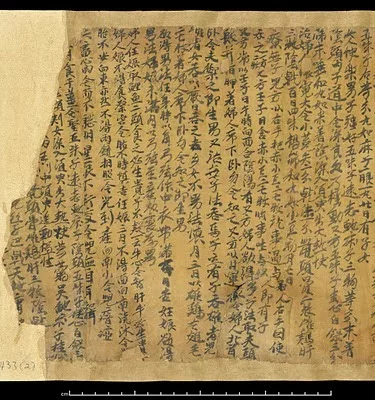
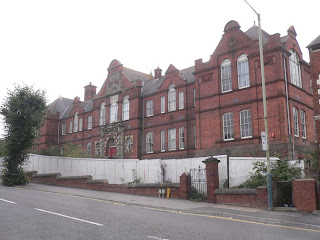

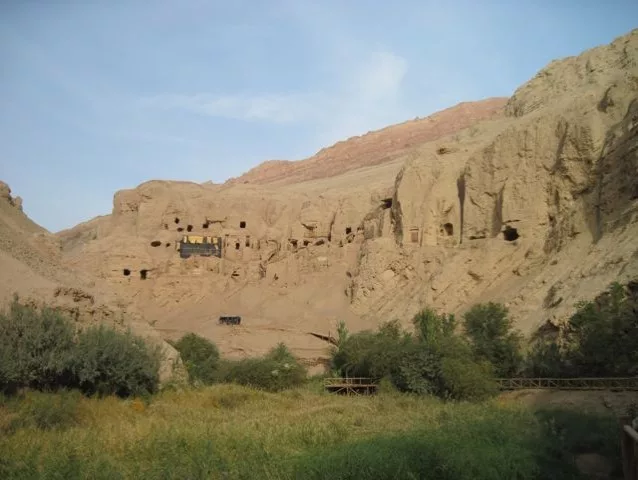
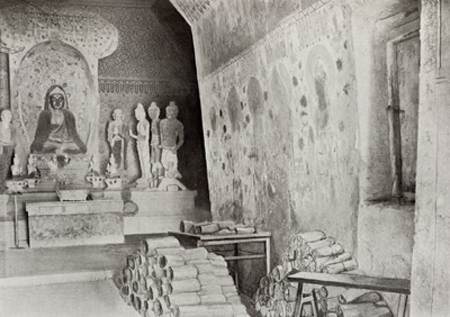
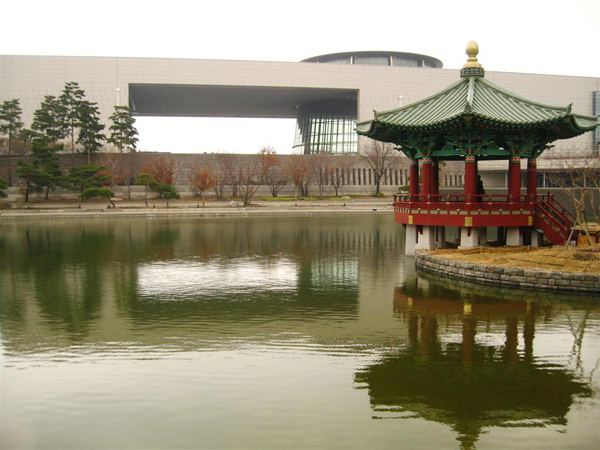
If you have feedback or ideas about this post, contact us, sign in or register an account to leave a comment below